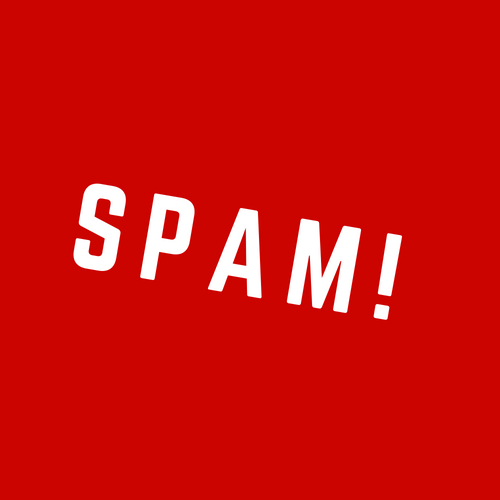
Apparently, Hormel Foods, the company that makes Spam, is not having a good week. Thousands of cans were recalled because of reports of metal objects in the meat. Spam is one of those foods you either love or hate. I know someone who loves it so much they cooked it on an ironing board in a hotel room. To each his own, I say.
I am old enough to remember when “spam” only referred to the meat product and a type hilarious sketch from Monty Python. It’s because of that comedy sketch that the term “spam” was coined to refer to unwanted messages. And it’s not been a good week for spammers either.
Why companies are concerned
Spam is not just annoying. The data collected can be used for unscrupulous or even illegal activities. And governments are beginning to take notice. I wrote a couple of pieces about the General Data Protection Regulation (GDPR) passed by the European Union over at Rabid Office Monkey and if you are still confused, there is some excellent information there. I just want to talk about how the regulation affects our emails—the ones we receive and send. You may have received a lot of notices asking if you want to consider receiving emails from certain companies. That’s because to be GDPR compliant, the companies had to make sure you were okay with not only the emails but with the fact the company has a lot of your information. And you probably saw a lot of popups on sites warning you that the site owners use cookies to gather data. Those were for the same reason—GDPR.
GDPR is not the only reason companies are suddenly worried about protecting privacy. Facebook revealed that an outside company, Cambridge Analytica, collected personal data of millions of users. That data was allegedly used to influence elections and could have been used to send out unwanted messages. The investigation is ongoing as to how this information was used and we will likely learn a lot more about this during the next few months.
Spam is not always, well, spam
Before we talk about spam and data collection, let’s first remember that we live in a data-driven age. Marketers use data to determine a plethora of things. The good guys won’t spam you, but you can join a mailing list and be removed from that list whenever you request it. Here’s an example of how data can be used for good: A food manufacturer uses data to determine what is the most popular candy. Because company officials know from the data that the candy is popular, it’s always available at your local store when you need it.
If a company is spamming you with unwanted emails, make sure you didn’t subscribe to their site while surfing the net. Giving your email on a site will usually put you on their mailing list. You should see an unsubscribe button at the bottom of these emails. Still receiving unwanted email? You can contact the Federal Trade Commission at spam@uce.gov.
Some spam, like the ones from foreign countries offering millions in exchange for a prepaid card, are a nuisance most of us endure. These will usually go in our spam folders and can be deleted with one click. You can report these, too but it’s unlikely they will stop.
Protecting your information
The other issue is the use of your private information by marketers. You can protect yourself by:
- Being careful about sharing your email. Read the fine print which will give you a brief explanation as to how the information will be used.
- Do you really need to know what you will look like in 2100? Some of those Facebook apps gathered information. Facebook suspended some, but many are still out there. You can’t get upset because you are told when using the app that you are giving permission and exposing your Facebook profile and information on that profile.
- Be careful who you follow and who follows you on social media. There are a lot of fake accounts and those behind them just want to steal your information.
- Keep an eye on your credit score. A company’s database where your information is stored may be breached, exposing your data to cybercriminals.
You can report suspicious activity in your social media or in your email to the company or to the FTC. But don’t get your hopes up that GDPR or other actions will change things soon. Officials still have a lot of details to work out on enforcement. When that first company is caught and punished for misuse of data, that’s when things will change.
 At least once a week someone will either message me or call me and I usually hear the same phrase–“I want to do what you do.” I guess I make this freelance writer’s life sound too exciting but let me dispel the myth right now–this life can be isolating, financially challenging and very frustrating some days. Don’t get me wrong. I am living my “dream.” I do get out since I write about travel and sometimes I like to do magazine interviews in person. But I also live in reality. I am honest and helpful and others have been to me as well.
At least once a week someone will either message me or call me and I usually hear the same phrase–“I want to do what you do.” I guess I make this freelance writer’s life sound too exciting but let me dispel the myth right now–this life can be isolating, financially challenging and very frustrating some days. Don’t get me wrong. I am living my “dream.” I do get out since I write about travel and sometimes I like to do magazine interviews in person. But I also live in reality. I am honest and helpful and others have been to me as well.

 This post was written by Lee Webb.
This post was written by Lee Webb.